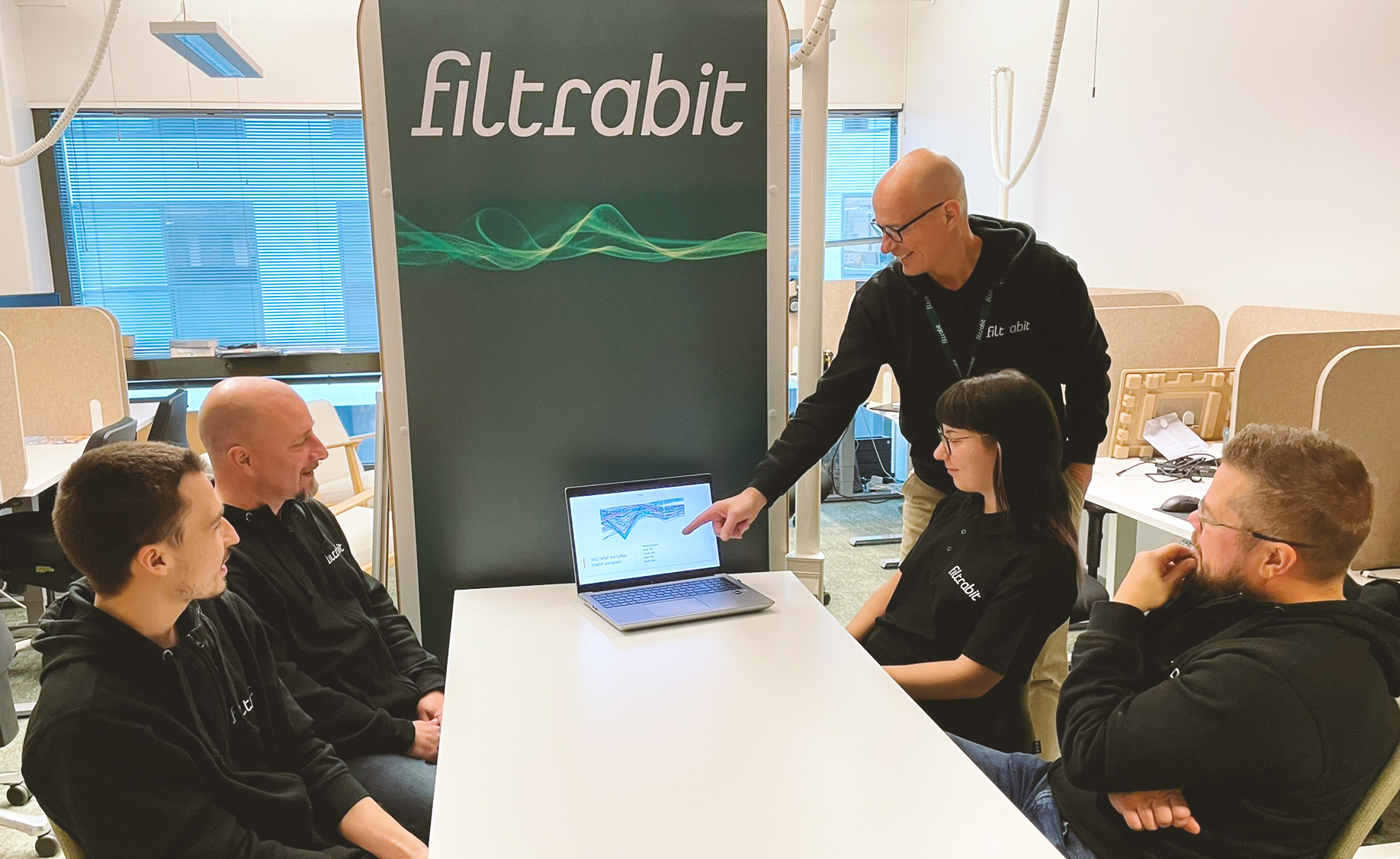07.01.2025
FLOW-principles of managing a distributed design organization
Chief Product Officer Jyri Tolonen and Lead Designer Mikael Tytärniemi share the design team’s framework for effective teamwork in a distributed organization.

07.01.2025
Chief Product Officer Jyri Tolonen and Lead Designer Mikael Tytärniemi share the design team’s framework for effective teamwork in a distributed organization.

Chief Product Officer Jyri Tolonen and Lead Designer Mikael Tytärniemi share the design team’s framework for effective teamwork in a distributed organization.
Filtrabit has grown from the industrial heartland of sparsely populated Northern Finland. Our design organization is headquartered in the city of Oulu but separated by hundreds of kilometers between most of its members.
One of the design priorities for the team with a steadily growing headcount has been the culture and ways of working for the team itself.
Drawing inspiration from the innovation we are all working on, we have centered our approach around the concept of flow. What followed were the FLOW-principles:
F – Focus
We do our best work in a flow-state, and to get to it, we need to be highly focused. On an individual level, it means maximizing uninterrupted segments of working on a single task.
On an organizational level it means making hard decisions about cutting nice-to-haves. It means being very deliberate and disciplined on each meeting invite, asking whether this person would be more productive working on their current task or attending this meeting.
Eliminating multitasking and the need to constantly shift between tasks requires effective and forward-looking prioritizing from the management. Does this task truly need to skip the line and interrupt the current one? If it absolutely does, look forward to see if there is another task about to do the same shortly after, and bundle them together.
We have identified three different types of meetings that are used to make sure we’re keeping focus:
Informational meeting – For larger groups, used to provide an overview and share progress. Facilitator presents line item by line item, focusing on brevity. Interruptions are kept to a minimum. Ends with assigning tasks and scheduling specific task meetings between smaller groups.
Task meeting – Used for specific tasks, where an invitation headline can be clearly worded to describe the focus. One person is in charge of the meeting and has prepared material for it. Attendees are chosen very deliberately because their input is needed, or they need to be brought up to speed on the matter.
Ad hoc meeting – Between two or at the most, three people. Used for brainstorming and quick feedback on ideas.
L – Low friction
Keeping the friction low is necessary for maintaining an uninterrupted flow of work. It means minimizing the need to wait for the input or approval of others. It means good communication and direct, honest feedback between team members.
What needs to be approved, who does it and when, must be clearly established at the outset, when tasks are divided.
Calendars must be well-maintained and available to team members for checking availability for ad hoc collaboration. Other collaboration tools like Google Spaces and direct messages are used liberally to keep the communication flowing, while email is avoided between team members.
Simple things, like using video in all remote meetings, help with getting non-verbal feedback and maintaining good relationships between team members.
In-person meetings are prioritized to jump-start rapport-building with new team members and outside partners, as well as periodically between longer periods of remote meetings.
O – Ownership
Each task has an owner, and they have autonomy on deciding how to achieve the goal of the task. They also have accountability for delivering outstanding quality and sticking to the schedule.
It means that each individual in the team must be self-directed. They are responsible for communicating any roadblocks in the way of their task to the rest of the team.
It also means taking positive ownership for the work of the entire team. Each team member is responsible for delivering even difficult feedback to the rest of the team, as well as directing the team back to these FLOW-principles when it strays. Everyone has the right and the responsibility to say: “I don’t think I should be in this meeting.”
W – Workmanship
We take pride in the quality of our work and gain motivation from excellence. We recognize that extraordinary results require extraordinary effort.
We do not aim to fulfill the task in its minimum specification but rather to a standard we are proud of.
We design for the real world and take into account the full usability of our designs. It includes their sourcing, sustainability, installation and maintenance.